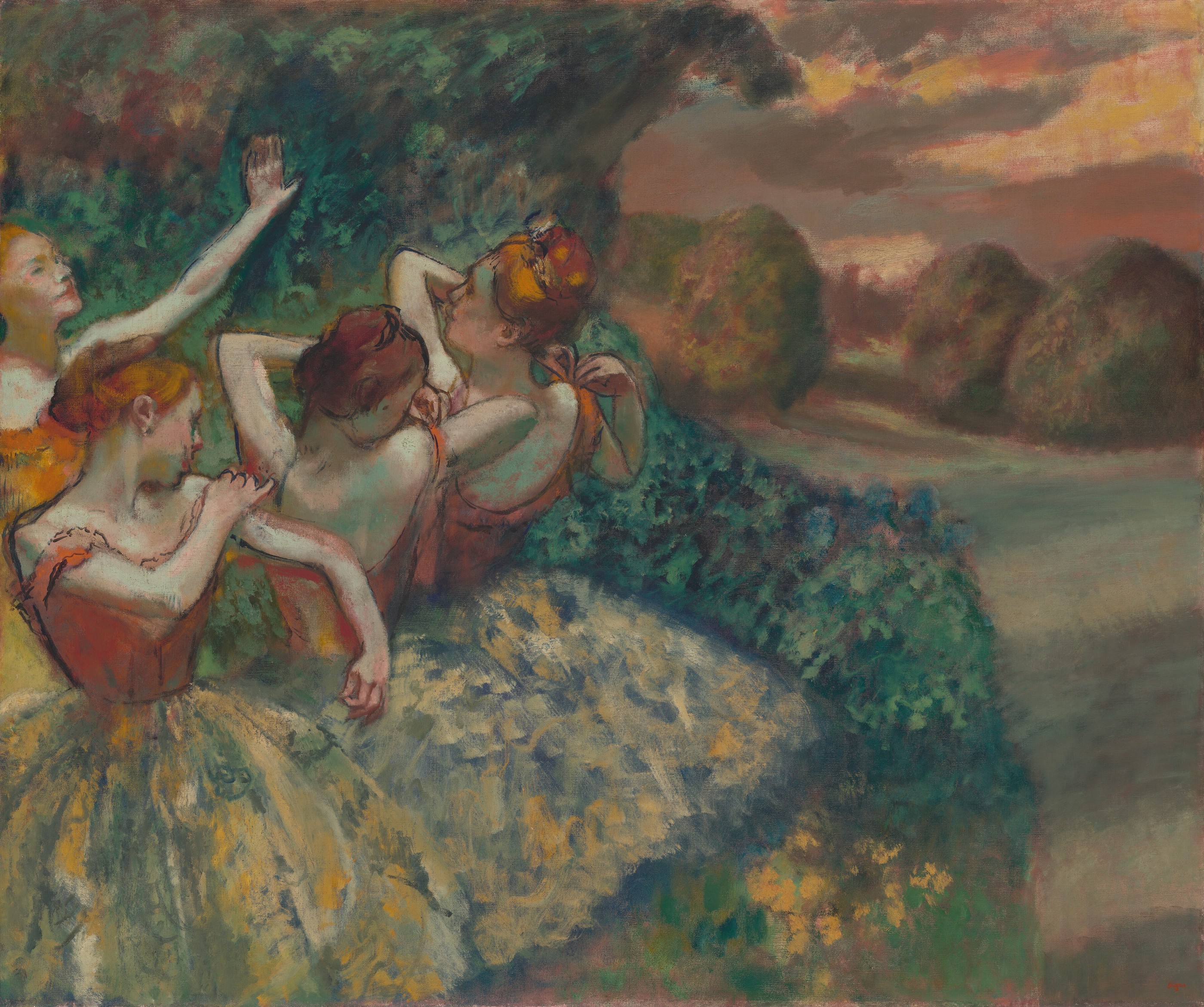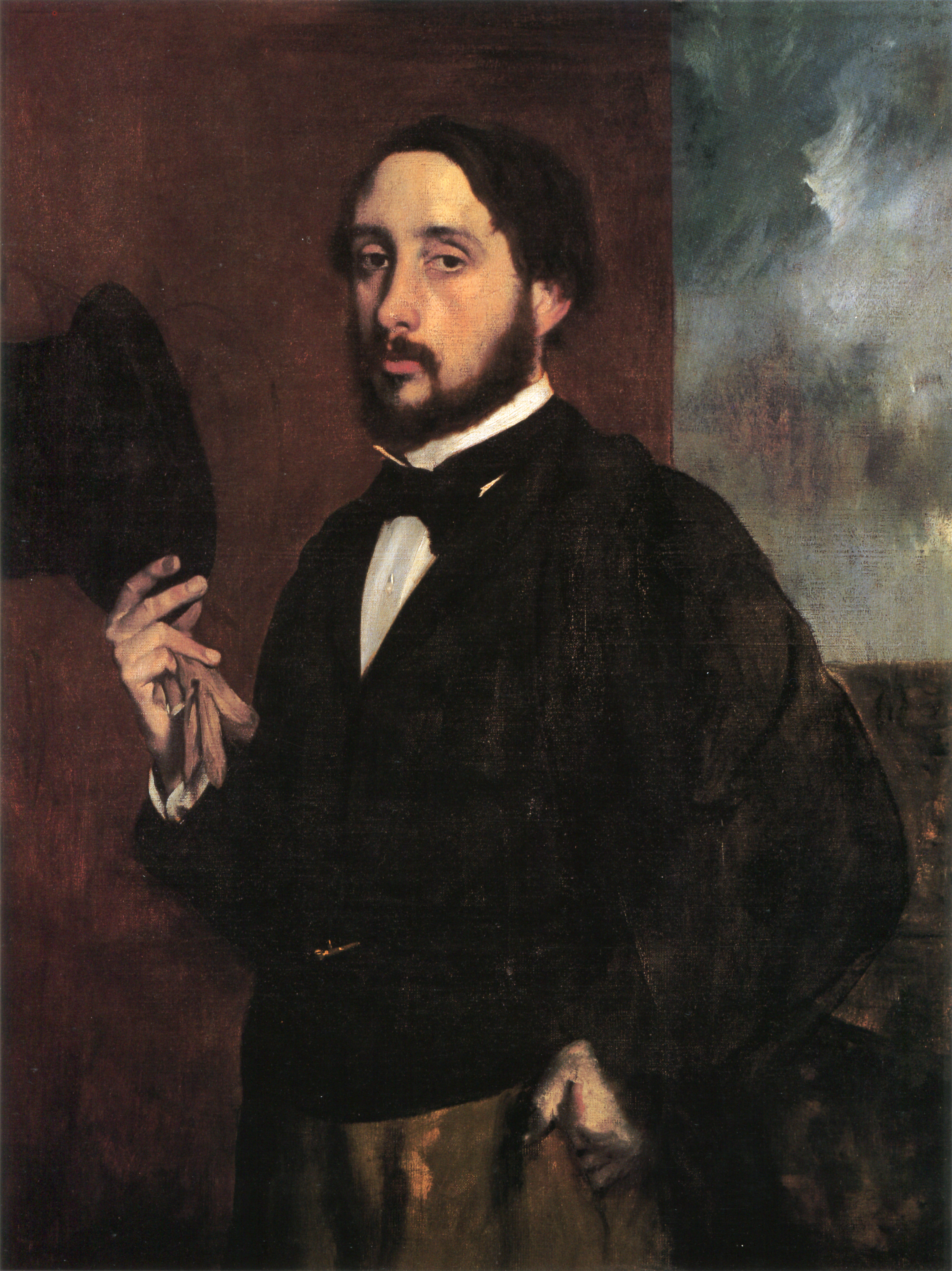Degas's fascination with ballet dancers is evident. The Four Dancers we present today is one of his largest and most complex pieces from his later period.
Two of the figures in the painting mirror a model's posture featured in a rare trio of photographic negatives taken sometime between 1895 and 1898. The original photographs underwent a process that resulted in solarized colors, mirroring—albeit in reverse—the orange and green hues seen in Four Dancers. It's believed that Degas owned these photographic plates and possibly even captured the images himself. The model, with her hair up and her face either blurred or concealed, is consistent across all three photos, and her likeness is echoed in the portrayal of the four dancers. Additionally, the arrangement of the dancers may have been inspired by Eadweard Muybridge's sequential photography, particularly his 1887 publication Animal Locomotion, which depicted movement through a series of staged poses. This influence is apparent in the dancers' poses, which sequentially convey the complexity of their motions.
P.S. Another Degas' ballerina is on the cover of our beautiful The Impressionists Notebook :) See what other great artworks are inside!
P.P.S. Here are Degas' most beautiful ballerinas! Aren't they exquisite?


 Edgar Degas
Edgar Degas